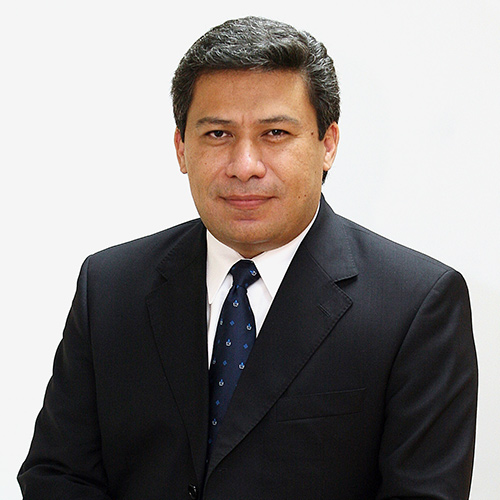The past couple of years have seen business transformed by technology in undeniable and irreversible ways, ranging from the Internet of Things to pizza-delivery smartphone apps. Customer habits and expectations have changed drastically.
As a result, businesses have changed how they operate and interact with clients—some taking the customer’s best interests into account more than others. In the banking industry, for example, many financial institutions offer what seem to be real-time transactions. However, most actually employ memo-posting, a technique that posts temporary credit or debit entries that appear as real-time transactions when, in fact, they are masking batch transactions behind the scenes.
BBVA Compass is changing all that. BBVA is the second largest bank in Spain and Latin America after Banco Santanter, and the largest in Mexico. Its US affiliate, BBVA Compass, has 688 branches in seven states and has recently spent $360 million to develop and roll out a truly real-time core banking platform that is changing the very nature of its customer interactions.
Customer Experience 2.0
BBVA Compass CIO Gabriel Sánchez-Iniesta believes that making that kind of change to the bank’s core infrastructure is essential for keeping pace with the technological changes that have occurred throughout society.
“Because customer expectations have changed so dramatically, we have to be part of that wave. It’s not just about managing systems or front-end touchpoints. We’re transforming all back-office processes to reflect how relevant they are to every customer transaction and interaction,” he says. “Things are very different compared to just a few years ago. Now technology is really what’s leading the customer experience.”
Automation built into the core banking platform has also streamlined back-office activities and reduced errors associated with manual processing.
“The behind-the-scenes improvements are critical. Otherwise, manual reviews or having to ask customers to go to a branch to complete administrative steps would undermine the functionality we’ve achieved in other parts of the system,” Sánchez-Iniesta explains.
BBVA Compass’s chairman and CEO, Manolo Sánchez, has been quoted as saying, “We’re redefining convenience by letting customers self-serve and choose the way they want to interact with the bank in their pocket.”
Other changes include shifting to paperless technology and implementing comprehensive workflow tools that route processing based on an automatic rules-based engine.
Real-Time Efficiencies
Real-time transactions are an integral part of every channel of BBVA Compass’s multichannel platform, including branches, ATMs, its website, and its award-winning smartphone app. In addition to providing uniform, seamless service for all transactions, real-time functionality has already produced tangible results.
- The time to open a new account has been reduced by 85 percent.
- Time-to-market for new products has been cut by 75 percent.
- Customers and employees now have enterprise-wide visibility into all transaction information.
- Problem incidents have been reduced by 18 percent in the past year.
A New Approach to Innovation
Sánchez-Iniesta’s role and his department’s approach to serving internal clients have also changed.
“We used to ‘take orders’ on what a line of business required and then determine how to deliver that via systems. Now we’re partners right at the outset, figuring out how a solution impacts and enhances the customer experience. That’s part of our evolution from being technical administrators to ‘customer-experience engineers,’” he says.
The bank has also begun implementing Agile project management, which emphasizes collaboration, dynamic solutions, and breaking down existing hierarchies. Based on the idea that “perfection is the enemy of good,” multiple weeks-long iterations—or sprints—are used to develop and implement solutions quickly with adjustments made as needed in subsequent sprints.
For Sánchez-Iniesta, who has extensive international experience and ideas that may seem out-of-the-box from a domestic banking perspective, this has provided a template for introducing innovation without traditional long-term development and the associated repetitive testing, reviews, and revisions.
“I never dictate a solution. I roll up my sleeves, review processes and alternatives with my team, and go over how the various approaches have produced positive results when I’ve faced similar issues in other places,” he says. “These are big changes we’re making, and that can create some resistance. But Agile offers a platform for finding consensus and rolling out innovative, streamlined processes that keep us in compliance and offer fantastic results for our customers.”
Creating New Opportunities
The digital arena has provided more than new strategies for enhancing customer satisfaction. BBVA Compass’s core banking platform and comprehensive menu of products and services has also opened the door to partnerships with new online financial companies that offer limited but highly specialized functions. For example, the bank already has an agreement with Dwolla to provide real-time processing of that company’s peer-to-peer fund transfers.
While new financial players can benefit from the bank’s broader value chain, Sánchez-Iniesta sees great advantages for BBVA Compass as well.
“Our open platform lets us offer our menu to outside institutions. But we can also quickly incorporate outside innovations and protocols that improve the quality and scope of our services. It’s an effective and flexible way to stay competitive as the bar for customer expectations keeps getting raised higher,” he says.
In any evolving industry, there is a delicate balance between fast-paced innovation and maintaining customer-service levels and satisfaction. Sánchez-Iniesta views that as an ongoing challenge as the bank continues its digital transformation.
“We have to keep our engine in motion as we implement these changes, so sometimes it really does feel like changing the tires on an eighteen-wheeler while it’s still moving,” he admits.

